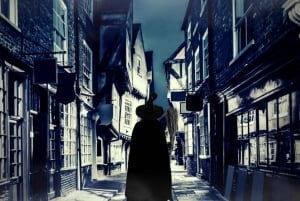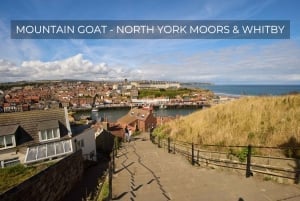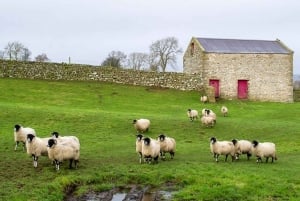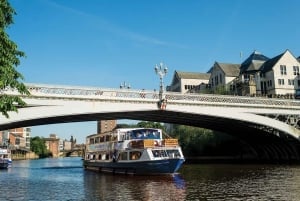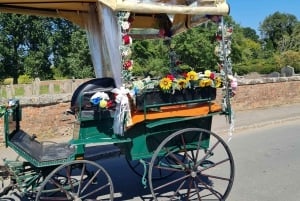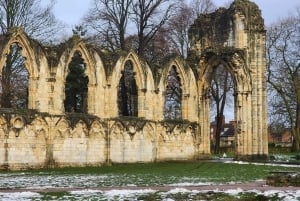Historical figures from York
As well as many famous historical buildings, York also has a host of historical figures who were either born, lived or died in York. Below are just a few examples of famous people you may know of from History.
Dick Turpin
Richard (Dick) Turpin, otherwise known as Richard Palmer, was hung in York in 1739. Infamous for being a Highwayman Dick Turpin was finally tracked down in York and sent to Prison within York Castle which is now where the Castle Museum is located. The cell that he spent his last days in can still be seen as part of the Dick Turpin Exhibition within the Castle Museum. Dick Turpin was taken to the Knavesmire in York and publically hung. There is a small paved area on the knavesmire to show exactly where the public executions used to take place. It has been known for people to leave flowers on this spot. After the execution Dick Turpin was buried in a cemetery very close to the city centre. It is possible to go and visit the grave of Dick Turpin one of the best remembered highwayman in History.
Margaret Clitheroe
Saint Margaret Clitheroe was born in York in 1556. She married a butcher and lived in the shambles with her husband and children. Born a protestant, in 1574 Margaret became a Catholic. During this time Catholics were persecuted and Mass had to be celebrated in secret. Margaret began to hold Mass in her home in the Shambles.
Her house was regularly searched by the authorities for evidence against her but the priests were able to escape via the attic which had a hole leading to the house next door. However, in 1586 during a house raid a small boy became frightened and told the authorities everything. Bread, wine and Priests clothing were found in the house.
Margaret was sent to Prison but she refused to plead to the charges against her of harbouring the Roman Catholic priests. She did not want to implicate her children the trial and therefore she was Crushed to Death. This form of torture was used for people who refused to answer a plea of charges against them in the hope that it would force them to speak. Heavier and Heavier weights are placed on the chest until the person is unable to breathe.
On March 25 1586 Margaret Clitheroe was to be executed on Ouse Bridge (there is a plaque on the bridge to commemorate this) She was laid upon a small sharp stone and then had a large and heavy door put on her chest. This door was loaded with more and more weights until her back broke against the stone and she was crushed to death.
After her death her right hand was removed and this is now on view in the Bar Convent Museum in York. Her home in the shambles has become a shrine to her and can be visited. Margaret Clitheroe was canonised by Pope John Paul IV in 1970.
Guy Fawkes
Guy Fawkes was born and raised in York. He was born in a house in Stonegate in 1570 and was educated at St Peters school in York. St Peters scholl still exists today.
Later in his life Guy Fawkes became an activist against the persecution of Catholics. He became involved in a gang that planned to kill king James 1st by blowing up the Houses of Parliament during the state opening on November 5th 1605. Guy Fawkes was discovered in the cellars of the Parliament building with 36 Barrels of explosives after an anonymous letter was received by a fellow catholic who would be at the opening of Parliment.
Guy Fawkes was taken to the Tower of London and tortured to find out who his co conspirators were. Eventually after three days of torture Guy Fawkes named the other members of the gang. The jury found all of the defendants guilty of High Treason and the penalty was to be Hung,Drawn and Quartered. Guy Fawkes was put to death on 31st January 1606.
Every year on 5th November it is traditional to build a bonfire and create an effigy of Guy Fawkes to burn on top of the bonfire. This was originally in celebration of the escape of the king but has now become a popular event which is celebrated up and down the country.
Constantine the Great
In the year 306 in the city of Eboracum, as York was then known, Flavius Valerius Aurelius Constantinus became the Emperor of Rome.
Constantine and his father had spent a year based in Eboracum at the large Roman headquarters that were built here. The remains of the Roman headquarters lie underneath the York Minster. A bronze statue of Constantine is located close to the Minster to mark the spot where he was declared Emperor.
On the 25th July 306 Following an illness his father died and on his deathbed he declared that Constantine was to become the next Roman Emperor.
Constantine successfully ruled the Roman empire until 337. He was the first Emperor to unite the whole Empire under one leader. He built Constantinople (now Istanbul) as the new capital of the Empire but he is best remembered for his support of Christianity.
Constantine helped to promote and unite the Christian faith by allowing people to worship freely, in 313 Constantine legalized Christianity which lead to Christianity becoming the dominant religion of the Roman Empire.


